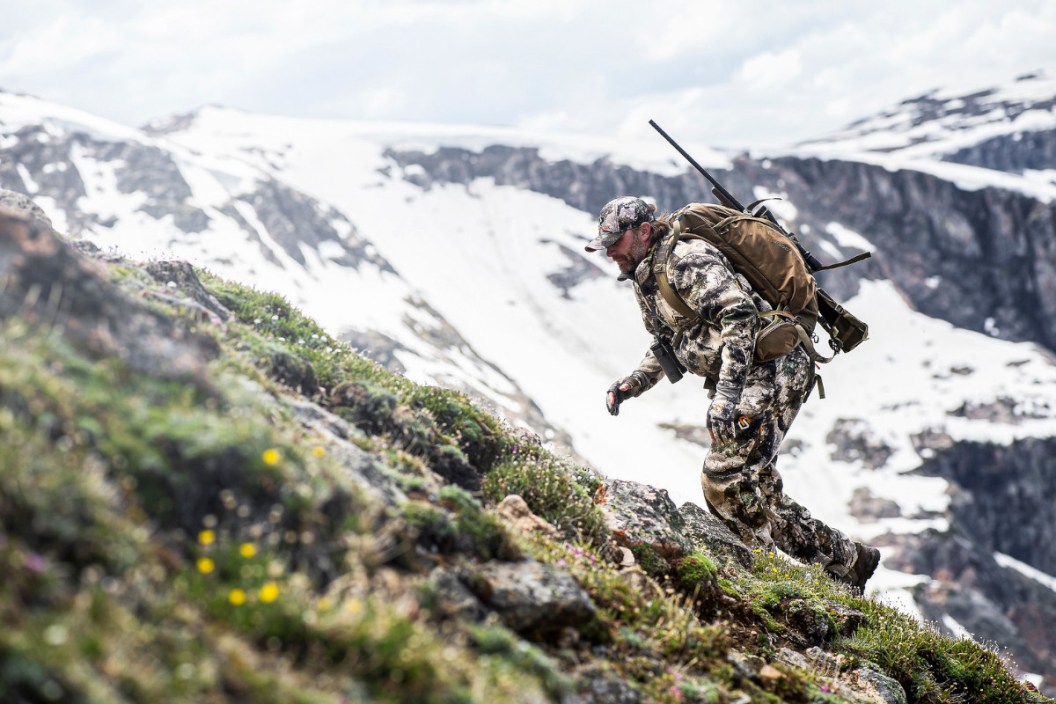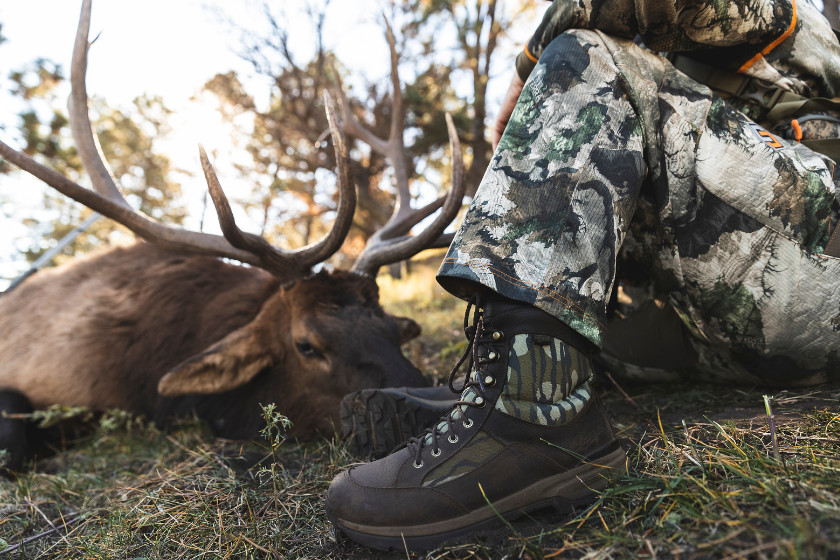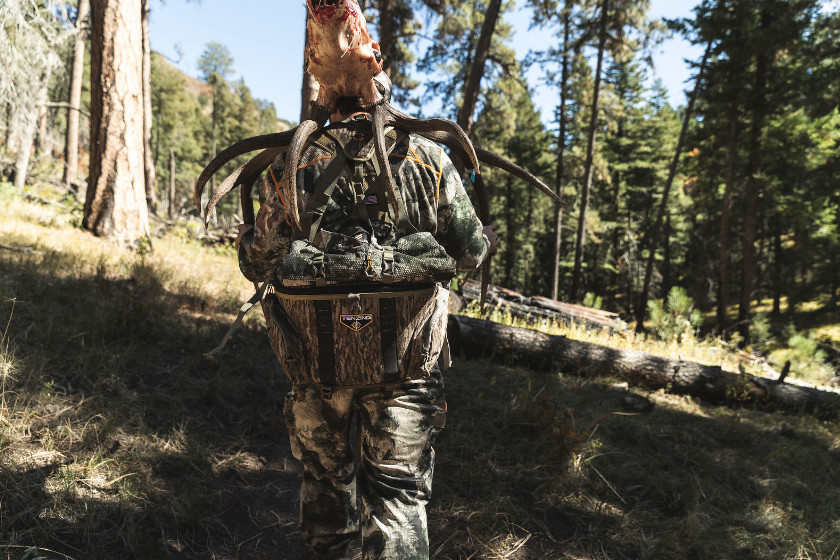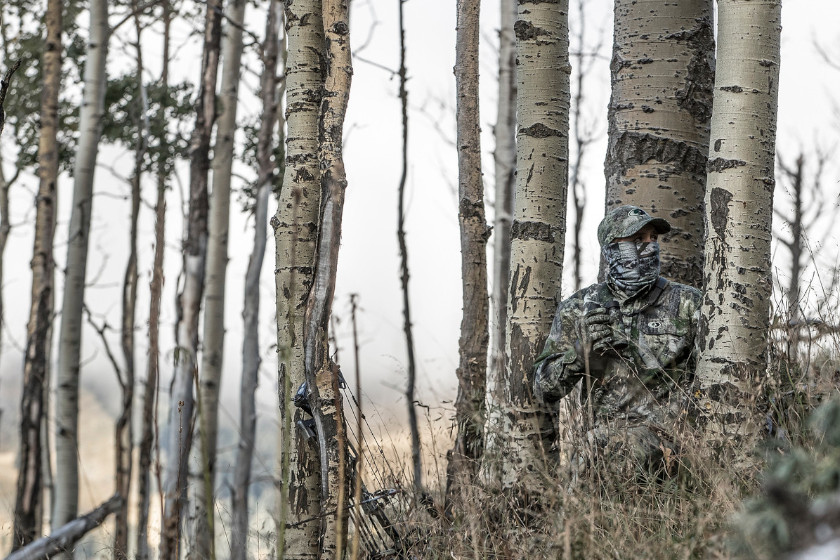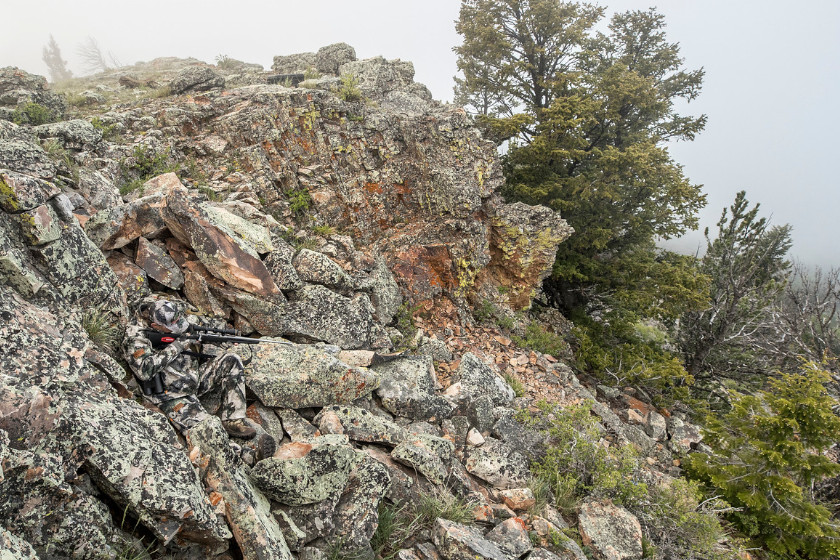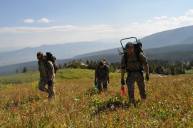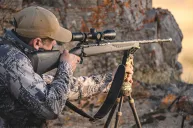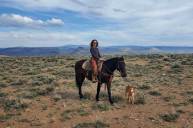It finally happened. After years of applying, you just drew the tag for the hunt of a lifetime in an extremely mountainous state. Maybe you were expecting it, maybe you weren't. The fact is you now have an opportunity for an elk, ram, or goat in a high elevation place and very little time to prepare for it. This happens more often than you think. And some hunters are woefully unprepared for the physical toil that comes with hunting in the mountains at elevations of 5,000 feet or more.
It's especially difficult when the hunter has never experienced high elevations like that in the past. You don't want to spend thousands of dollars on tags, gear, and travel only to find you are not physically able to scale the hills, peaks, and canyons to where the animals are hiding. You must prepare ahead of time for a hunt like this. Don't worry, we've got some practical tips for how to conduct your training, even if you live in a flatland, low elevation state in the Midwest like I do.
If you haven't drawn a tag yet, this training could be helpful for keeping you in shape for when you are finally fortunate enough to get one. The great news is that the gear you'll need is probably less expensive than you might think. You may even already own some of it. The hard part is starting a routine and then sticking with it. If you do that, by the time your hunt rolls around, you'll be set to conquer the mountains, and harvest that animal you've always dreamed of taking.
Get a Quality Pack and Footwear
Two things you should never skimp on when it comes to a high elevation hunt are the pack you'll be using and the boots you'll be wearing. We've heard far too many horror stories from hunters who tried to save a little money using cheaper equipment, and they almost always end up regretting it. We highly recommend going to the store and trying footwear in person, making sure it's comfortable before you buy. The same goes with a quality pack. Inspect the shoulder straps carefully. Are they wide and padded enough that it feels like the pack hugs your back? If it feels like they're cutting into your shoulders, you may want to look at something else. Make sure you cinch the straps tight to check the fit.
It's best to train with the same pack and footwear you plan on using on your hunt. This gives you the chance to properly break in the footwear long before the hunt ever starts. It will help reduce the odds of developing painful sores and blisters on your feet in the middle of the hunt. Your ability to stealthily stalk close to a big game animal will be severely hindered if your feet are in constant agony with every step you take. The same goes for your knees if your pack isn't properly distributing the load evenly across your back.
Training with Weights
The best thing anyone can do to prepare for a high elevation hunt is some form of weight training, and we're not talking about the kind you see in a gym. We're talking about the kind you put in a pack before going hiking.
There are several different ways to do this. The simplest thing to do is to pack all the hunting gear you're planning to bring on your high elevation hunt. In that way, you're effectively doing a real-time simulation of the hiking you'll be doing. In fact, we definitely recommend packing and trying on your pack with all that gear ahead of time. This gives you a chance to play around with an adjust how you pack so your stuff isn't sliding around and shifting with every step. After walking with the loaded pack a few times, it gives you a chance to assess what you really need and don't need. Perhaps you need to part with a piece of gear for a lighter alternative.
Hiking with the gear you're already planning to use is good, but I highly suggest picking up a rucking weight or two. These weights are specifically designed for backpacks and this type of strength training. The nice thing about these weights is you can increase the weight steadily as your strength in your legs builds. Eventually, you can increase the weight over what your gear weighs. Then, when you finally get on that mountain, getting to the top of that next ridge will seem easy by comparison. Remember, if you're successful in your harvest, you're also going to need to pack all that meat, plus the possibility of a heavy cape and horns/antlers too. It's best to keep that in mind and do some practicing with heavier loads from time to time too. Another option is to purchase a weight vest where you can add or remove weights as you see fit to build your strength over time.
When doing this type of weight training, I recommend starting slow and flat. My first time out hiking with a rucking weight, I barely made it a mile with 15 pounds in the pack. You calves WILL burn the first few times you do this. Don't get discouraged, and stay at it. Try to increase the distance a little more each day, and the weight a little at a time, especially if you're out of shape. Slowly, your strength will build. I'm at the point now where I hike at least three miles every day with 30 pounds on my back. It only takes about an hour out of each day, and it's made a marked difference in my health and stamina when climbing any steep terrain. You don't necessarily need to hike every day either. I recommend doing maybe two days your first week, three the next, and so on until you find a comfortable routine that works for you. Don't forget to step up the weight and the length of your training hikes as your hunt draws closer. Some hunts may require 10 to 15 miles a day of hiking, and you want to be prepared for that possibility.
Finding a Place to Train, and Simulating High Elevation
If you live in a flat state, the biggest challenge in training is often just finding a place that simulates the terrain. I recommend checking your local county and state parks first to see what they have to offer. Here in southwest Michigan, I've found that any area that saw glacial activity hundreds of thousands of years ago usually has plenty of hills and hollows that are perfect for training. Sometimes, it may take a little exploring to find a place with appropriately challenging terrain that can simulate the conditions on a mountain hunt. If you're still having trouble finding a spot, consult with some topographic maps of your area to find the steepest hills possible. Another quick tip I can give is to find out where the local high school hosts their cross country meets. These courses often include challenging terrain that's perfect for training.
The one thing that's harder to train for is the thinner air at high elevations. Everyone reacts differently to elevation. The only time I've experienced altitude sickness was at the top of Pikes Peak in Colorado, which is just over 14,000 feet. However, I've seen other people experience the symptoms at elevations of 7,000-9,000 feet. If you don't have mountains, there's few ways to prepare for this aspect of the hunt.
Our best suggestion for flatlanders is to invest in a high elevation training mask. These masks usually sell online or in sporting goods stores for $20 to $50. They are meant to help increase lung capacity by simulating the effects of high elevation. It's not a perfect representation of what hiking in high terrain is like, but it will do in a pinch for a hunter in a flat state like Nebraska or Iowa. Again, we recommend starting slowly with this type of routine and then working your way up in intensity as you build strength in your lungs.
Other Considerations for High Elevation Hunting
Despite being in good shape, altitude can flat out make some people sick. Check out our complete guide on altitude sickness for more tips on how to combat the effects of less oxygen. However, if you have trained properly, you'll find you suffer fewer symptoms than people who have not. We recommend starting your routine just hiking a few days a week and expanding from there. We know it's hard to work in time to hike during a busy work week, but even just an hour a day is going to make a world of difference when you finally get on that mountain. We also highly recommend talking to your doctor before starting any of weight training and hiking routine like this, especially if you're over age 50. Hiking with rucking weights can be tasking on lower joints until you build up strength, so you'll want to consider your options carefully if you've had foot or knee issues in the past. A licensed doctor can give more pointed advice on the proper way to build a routine that works for you.
Our last suggestion is to not wait until you've drawn a tag to start preparing for a hunt like this. I've personally found hiking with weights to be the best workout that fits into my busy schedule. In 2021 alone I dropped around 35 pounds hiking three miles a day with 30 pounds on my back. I feel very confident that if I get drawn this year for any of the hunts, I've applied for, I'll be ready when the time comes.
For more outdoor content from Travis Smola, be sure to follow him on Twitter and Instagram For original videos, check out his Geocaching and Outdoors with Travis YouTube channels.
